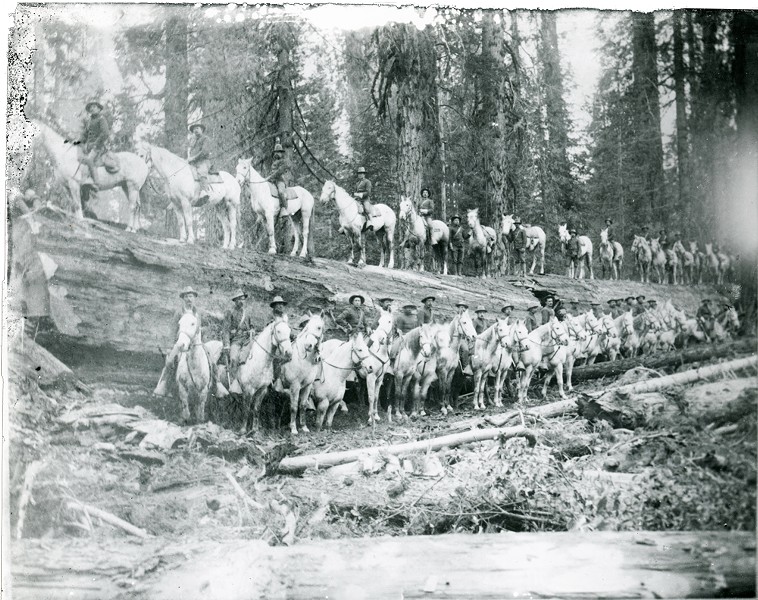THE INDIGENOUS FIGHT AGAINST ILLEGAL CANNABIS GROWS
From North Coast Journal by Kaitlin Reed July 6 2023
Editor’s Note: The following is an excerpt from Kaitlin Reed’s book Settler Cannabis: From Gold Rush to Green Rush in Indigenous Northern California that has been edited for publication in the Journal.
The July sun was hot on the back of my neck as I struggled to find my footing on a steep mountainside along the Klamath River. Yurok ancestral territory is located here in northwestern California and has been the ground zero for cannabis production since the 1960s. At the height of the contemporary cannabis “green rush,” Yurok ancestral territory was under siege by large-scale trespass cannabis cultivation. Illegal and unregulated water diversions ran our streams dry and degraded water quality with chemical pollution and human waste. My colleagues with the Yurok Tribe Environmental Program were tasked with dismantling the cannabis irrigation structures that were sucking tribal water resources dry and documenting the ecological impact of cannabis cultivation. We were looking for thin black plastic tubing — hard to see and even harder to remove. As sweat poured down my face, the quantity of tubing seemed never-ending. I ripped up as much polyethylene tubing as possible in an attempt to liberate our tributaries. Within a short time, there was a gargantuan pile of black snakes ready to be removed from the landscape. However, the concern that additional black snakes remained continues to linger.
The onslaught of settler-colonial destruction is not relegated to history; it is very much a part of our present and lived experiences as Indigenous peoples in this region. Our River, the lifeblood of our people, has been under attack since settler-colonial invasion a little over a century and a half ago. The history of water development and extraction in the Klamath Basin has disproportionately impacted Indigenous peoples, water, plants and wildlife. The Klamath Project of 1905, the first Bureau of Reclamation project, led to the construction of four deadly dams and extensive agricultural pollution of the Klamath River, effectively collapsing the possibility of future sustainable subsistence fishing economies. This has had detrimental impacts on the cultural and food sovereignty of Native peoples within the Klamath Basin, as well as on fish, wildlife and plant species.
Within Yurok culture, Salmon are understood as relatives and ancestors. While the word “genocide” is reserved for human beings within a Western paradigm, we conceptualize the fish kill as a genocide. In 2002, our Salmon relatives faced a genocide of cataclysmic proportions. Steward for the Many Nations Longhouse Gordon Bettles (Klamath Tribe) argues that the tragic 2002 fish kill that left 70,000 dead Salmon rotting along the banks of the Klamath River “was caused by a collision of cultures that began when the first ships landed on the east coast of North America in 1492.” The arrival of those ships and the fish kill transpired 510 years apart, but, he argues, the settler-colonial worldview that separates humans from nature and understands land as property and a source of wealth accumulation is responsible for creating the conditions that allowed a fish kill to occur. In other words, Columbus had snakes on his boats.
A century of water infrastructure development and increasing demand for water for grazing and agricultural production dramatically decreased the flows and increased the temperature of the Klamath River. This created an environment in which disease could spread rapidly — and it did. Conservative estimates suggest that in 2002 at least 30,000 Chinook, 600 coho and 1,000 steelhead succumbed to a deadly pathogen, known locally as “Ich” (Ichthyophthirius multifiliis).
As Salmon people, we understand ourselves to be in relationship with Salmon and the Klamath. Salmon are a cultural and nutritional staple for Yurok people. Even our creation story instructs Yuroks on this ancient relationship. But the significance of the River and the Salmon are difficult to explain in objective Western frameworks of science and may be impossible to understand for those who measure Mother Earth’s bounty in numeric values. Case in point: Salmon and the environment they depend on have been under a series of continuous assaults since settler invasion — from mining to timber harvesting to grazing and damming, and now to irrigating for cannabis. Reflecting on battles over fishing rights in western courtrooms, Susan Masten (Yurok), tribal chair of the Yurok Tribe and president of the National Congress of the American Indians at the turn of the 21st century, declared: “We are salmon people. We couldn’t let anyone take that from us.” And the Yurok Tribe has held this responsibility through its consistent efforts at Salmon protection and dam removal.
Within Yurok epistemology, the Klamath River is a living being. As a Yurok person, I understand the Klamath as a vein that connects me to the Earth. It is central to what historian Vine Deloria Jr. (Standing Rock Sioux) called our “sacred geography,” and is often referred to as an “umbilical cord to the Earth.” Struggles over water figure centrally in Indigenous fights for sovereignty and nationhood. As Indigenous peoples around the globe rise up to defend and protect our waters, we are fighting for the future of the Earth, our peoples and all living beings.
In 2016, the eyes of the world turned to watch the Standing Rock Sioux Nation and their allies spanning the globe rise up to challenge the construction of an oil pipeline. The Oceti Sakowin Nation of the Mni Sose (Missouri River) have a prophecy about Zuzeca Sapa, or Black Snake. Nick Estes (Lower Brule Sioux Tribe), in his book Our History Is the Future: Standing Rock versus the Dakota Access Pipeline, and the Long Tradition of Indigenous Resistance (2019), writes:
Prophecy told of Zuzeca Sapa, the Black Snake, extending itself across the land and imperiling all life, beginning with the water. From its heads, or many heads, it would spew death and destruction. Zuzeca Sapa is [Dakota Access Pipeline] — and all oil pipelines trespassing through Indigenous territory. But while the Black Snake prophecy foreshadows doom, it also foreshadows historic resistance and resurgent Indigenous histories not seen for generations, if ever. To protect Unci Maka, Grandmother Earth, Indigenous and non-Indigenous peoples will have to unite to turn back to the forces destroying the earth — capitalism and colonialism. But prophets and prophecies do not predict the future, nor are they mystical, ahistorical occurrences. They are simply diagnoses of the times in which we live, and visions of what must be done to get free.

I first heard this story on Nov. 15, 2016. By then, water protectors were facing arrest; six days later law enforcement began the use of tear gas and water cannons. Safe on my college campus, I attended a Standing Rock teach-in at the University of California, Davis. Facilitators brought us up to speed on what had happened to water protectors; we discussed educational resources. However, the part of this event I still think about quite frequently was an Oceti Sakowin Nation prophecy shared by my colleague Jessa Rae Growing Thunder (Dakota/Nakoda/Assiniboine). Even apart from Growing Thunder being a terrific storyteller, her words captivated me. Like in Estes’s telling, Zuzeca Sapa, or the Black Snake, would bring great destruction and the people would have to rise up to defeat it. Though I arrived at this teach-in prepared to think about Standing Rock and the ways I could support the activism occurring on my college campus, as I biked back to my apartment, my mind was not on Cannon Ball, North Dakota, at all — no, I was thinking about the ancestral homeland of my people in Northwestern California. And it dawned on me that my people, too, were fighting their own black snake.
During the summer of 2014, I was hired as an environmental technician at the Yurok Tribe Environmental Program. On the morning of July 21, I stared out the window of the commute rig as we made our way up U.S. Highway 101 to Klamath. I remember sitting at my desk, sipping weak coffee. After logging into my email, I saw a Los Angeles Times article that had been forwarded to all tribal employees: “Massive Raid to Help Yurok Tribe Combat Illegal Pot Grows.” While I sat safely in that office, other tribal members and employees, accompanied by dozens of law enforcement officers clad in camouflage and carrying assault rifles, made their way upriver. Their goal that morning was to eradicate cannabis cultivation and document the resulting environmental damages, both within and beyond the boundary of the Yurok Indian Reservation.
Operation Yurok was a tribe-led cannabis eradication campaign that took place from 2014 to 2017, designed to eliminate environmentally hazardous trespass cultivation. One of the primary concerns of the campaign was to address illicit water diversion used for cannabis production. But we didn’t have just one clearly visible black snake to battle — there were hundreds, probably even thousands, hidden away in the hills. Our black snakes are not constructed of metal or filled with oil. Instead, our black snakes are made of polyethylene. Small and thin, and sometimes nearly invisible, if you do not know where to look, our black snakes are scattered over hillsides, siphoning water from springs and streams to thirsty cannabis plants. There was (and continues to be) fear that drought conditions and climate change, with the added impact of unregulated illicit water diversion for cannabis, could result in another catastrophic fish kill. This cultural collision culminated in 2002 but it began with invasion, with those first ships.
As Yurok people, we cannot talk about water diversion for cannabis without talking about Salmon and the health of our River. The River is already overtaxed and overallocated — and must endure the impacts of human-caused climate change. This is true of many Rivers throughout California — all of which have significant ties and connections to Indigenous peoples of that region. When our Rivers give us a choice between Salmon or cannabis, I hope the answer is an easy one. Salmon constitute both an ecological and a cultural keystone species. People, plants and wildlife all depend upon Salmon and the often unacknowledged ecological labor they perform. If Salmon disappeared from the Klamath Basin, the ecosystem would collapse. Their well-being is fundamentally tied to ours. As Yurok people fight for the very survival of Salmon, they are fighting for their own right to survive — to live in a world of ecological and spiritual balance. Salmon’s resilience keeps alive the hope of a better future for Yuroks and all California Indian peoples.
The surge in cannabis production, dubbed the green rush, is an apt analogy to the Gold Rush–era ideology of Manifest Destiny, resource extraction and wealth accumulation. For California Indians, the Gold Rush was an apocalypse aimed at destroying Indigenous cultural and ecological worlds. The state of California was founded on genocidal violence toward California Indians, on Indigenous land dispossession and on resource extraction. I argue violence against the landscape is mirrored or paralleled in violence against Indigenous bodies. Just as our Rivers are attacked by black snakes, so are our peoples, our cultures.
This violence has been fundamental for the creation and maintenance of the state of California. The contemporary Green Rush violence against Indigenous lands, waters, and bodies cannot be understood in isolation. It is part of a larger historical pattern of the violence associated with resource “rushing.” While state-sponsored militias no longer commit for-profit murder of California Indians, our traditional gatherers and basketweavers have faced threats, fear of physical violence and intimidation from trespass grow operations. More-than-human relatives have been intentionally poisoned and exposed to chemicals located at grow sites. Whether it be oil pipelines or cannabis irrigation infrastructure, these black snakes are merely symptoms of two greater foes: capitalism and colonialism. Resource rushing, guided by the rush mentality, is a violent settler-colonial pattern of resource extraction that has been repeatedly played out — first gold, then timber, then fish and now cannabis.
California Indians have watched this pattern play out over and over again. We already know how the story ends. Everywhere we look, it seems, lands and waters are being desecrated in the name of profit. But as Estes notes, the Zuzeca Sapa prophecy foretells resistance and resurgence to capitalist and colonialist forces. We are rising up.
Kaitlin Reed (she/her, Yurok/Hupa/Oneida) is assistant professor of Native American studies at Cal Poly Humboldt.







Comments are closed.